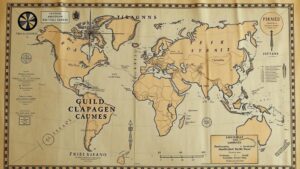Mining Oral Histories from Local Elders for Stories of Hidden Treasures
Mining Oral Histories from Local Elders for Stories of Hidden Treasures
In the academic exploration of cultural heritage preservation, mining oral histories from local elders has emerged as a vital methodology. This approach not only serves to document personal narratives rich in historical significance but also uncovers hidden treasures–stories, traditions, and wisdom often overlooked by conventional historical record-keeping. This article delves into the value of these oral histories, their methodologies, challenges, and implications for both local and broader communities.
The Value of Oral Histories
Oral histories provide a unique insight into the lived experiences of individuals within their cultural context. Elders hold a wealth of knowledge about local traditions, folklore, and historical events that may not be documented in written form. According to the Oral History Association, these narratives help to bridge generational gaps, ensuring that crucial cultural knowledge is preserved.
For example, in the year 2004, the Smithsonian Institution initiated the Gathering Voices project, which aimed to document the oral histories of Indigenous people in the Pacific Northwest. This project successfully recorded over 50 hours of interviews, highlighting unique cultural practices, such as traditional fishing methods and medicinal uses of native plants, which were at risk of being forgotten. e narratives serve not only as a preservation tool but as a means to foster community identity.
Methodologies for Collecting Oral Histories
Collecting oral histories requires a carefully structured approach to ensure the authenticity and reliability of the narratives. Key methodologies include:
- Interviews: Conducting structured or semi-structured interviews allows researchers to gather rich narratives while providing flexibility for elders to share their stories.
- Community Engagement: Building trust within the community is critical. Researchers often attend local events or meetings to establish rapport with elders.
- Recording Techniques: Utilization of audio and video recording devices must be handled delicately to respect the comfort levels of individuals, ensuring that recordings are only used with consent.
In 2013, the Stories of the Land project in New Mexico involved collaborating with local Pueblo elders to document traditional ecological knowledge. Through this collaborative approach, researchers successfully preserved vital environmental wisdom about sustainable land management practices.
Challenges in Mining Oral Histories
While mining oral histories offers significant benefits, challenges persist, including:
- Memory Variation: Individuals may have differing recollections of events, leading to potential discrepancies in narratives.
- Cultural Sensitivity: Some stories may be considered sacred or not intended for public sharing, requiring careful consideration regarding the appropriateness of sharing these narratives.
- Technological Barriers: Limited access to recording technologies can impede the documentation process, especially in rural or under-resourced areas.
For example, in conducting oral history projects in rural Appalachia, researchers from the University of Kentucky faced challenges due to inadequate recording equipment and a general mistrust of outsiders. By employing local facilitators and investing in quality equipment, they overcame these issues and documented invaluable stories.
Real-World Applications of Oral Histories
The potential applications of oral histories are vast and impactful. They can be used in:
- Education: Oral histories can enrich educational curricula by providing first-hand accounts of historical events.
- Cultural Preservation: They serve as a resource for communities aiming to maintain their cultural heritage.
- Conflict Resolution: Understanding diverse perspectives through oral narratives can foster dialogue in conflict situations.
The work done by Project MUSE illustrates this; they collected oral histories from survivors of the Japanese American internment during World War II, which were later utilized in educational materials to teach about civil rights violations in America.
Actionable Takeaways
To effectively mine oral histories for stories of hidden treasures, the following actionable steps should be considered:
- Engage the community and seek to build genuine relationships with local elders.
- Ensure transparency in the project goals and consent for sharing personal stories.
- Invest in appropriate technology and training to enhance the recording and preservation process.
- Offer platforms for dissemination that help elevate community voices in broader dialogues.
Ultimately, mining oral histories is not merely an academic endeavor; it is a powerful tool for community empowerment and cultural preservation. By capturing these hidden treasures, we not only enrich our understanding of the past but also pave the way for future generations to cherish and reflect on their heritage.

